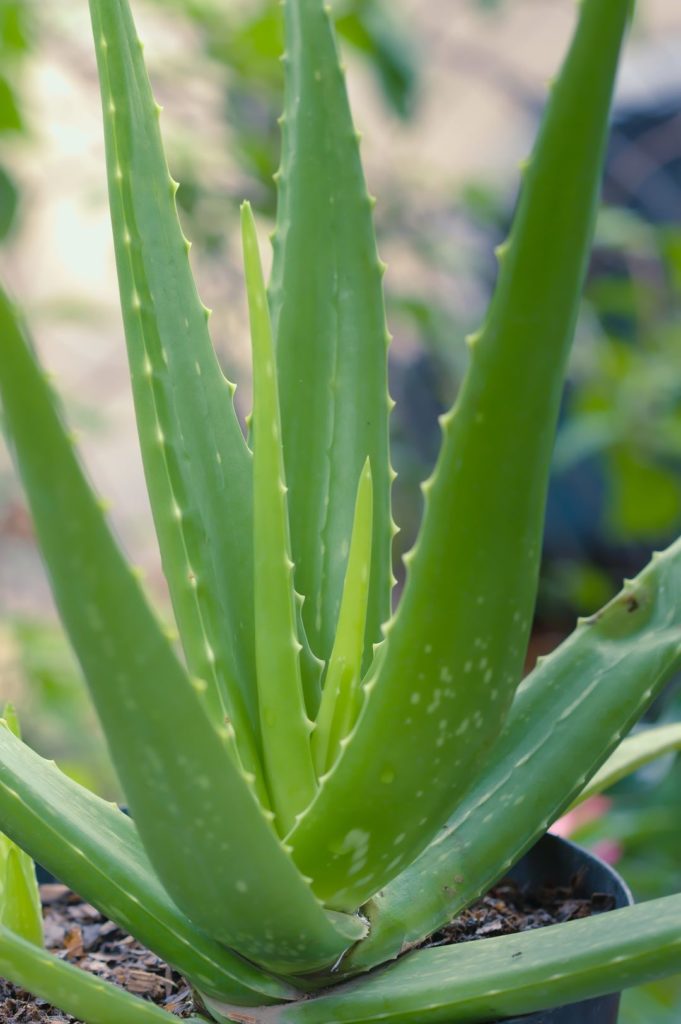
Aruba
Aloe
Aloe vera linne or Aloe barbadensis miller

General Description/Cultural Significance
There is a love of Aloe and aloe products, and the smell of aloe plants such as Aloe vera linne or Aloe barbadensis miller, is known to all Arubans. Aruba has long been an exporter of aloe vera and aloe vera products which are made from the thousands of acres cultivated in aloe. Aloe is a fleshy succulent plant and popular multi-purpose folk medicine that was commonly used to heal and moisturize but has become an ever-growing global ingredient in a collection of skin, hair, and sun care products. The island is nicknamed the “Island of Aloe” and the plant’s image adorns the island nation’s coat of arms.
Climate Change/Conservation Status
Tourism is a primary business of Aruba. The island is flat and has no surface water or internal rivers and depends almost entirely on the desalination of seawater. Desalination requires lots of power, which has meant that the island must shift away from fossil fuels to renewable energy. The nation’s goal has been to reach one hundred percent renewable energy usage and to do so it has implemented many incentives to encourage clean energy technologies such as wind turbines, solar panels and electric cars, but they are far from there.
Tourists are attracted to Aruba for its beautiful beaches and most of the island’s infrastructure is along the coast, both of which are threatened by rising sea levels, hurricanes and storms, and coastal erosion. The encroaching water levels are damaging the mangrove forests that protect the coast, requiring constant management. With the infiltrating water has come increased soil salinity levels. Sea grass beds are threatened too.
The increasing population on the island stresses not only the built infrastructure but also the marine ecosystems and coral reefs which have already experienced bleaching events. Wastewater, though technically treated, is still a problem especially during storms.
The timing of increased temperatures and other critical changes in Aruba’s weather patterns is disrupting many plants’ fruiting and flowering times, and interactions with pollinators and seed dispersers. This trend is expected to continue and to compromise future reproductive processes. Aloe vera appears to be adapted to the island’s dry, arid climate. However, this important medical plant is very much affected by climate factors. Rainfall, temperature and solar radiation, all in flux due to climate change, affect the medicinal properties and clinical effectiveness of its active constituents. The therapeutic biological properties of the plant that are primarily present in the leaf’s sap and gel could be compromised. The plant’s long history as a healing agent could potentially come to an end because of climate change. Scientific testing of the plant’s actions will be necessary as the effects of climate change increase.
Alternate Names
Aloe
Burn plant
First Aid plant
Sources
Aruba Tourist Board, New York, NY. This statement can be found on the World Sensorium original website.
Baptiste, A., & Rhiney, K., 2016. Climate justice and the Caribbean: An introduction. Geoforum, 73: pp. 17-21. DOI: 10.1016/j.geoforum.2016.04.008.
Baruah, A., Bordoloi, M., & Baruah, H. D., 2016. Aloe vera: A multipurpose industrial crop. Industrial Crops and Products, 94: pp. 951-963. DOI: 10.1016/j.indcrop.2016.08.034
Bush, M. J., 2018. Climate Change Adaptation in Small Island Developing States. John Wiley & Sons, Inc. [website] ISBN: 978-1-119-13284-4
Dutch Caribbean Nature Alliance, 2016. Climate change impacts within the Dutch Caribbean. Dutch Caribbean Nature Alliance. [online]
Nicholson, G. and Robinson, R., 2019. Op-Ed: Marine Pollution in the Caribbean. Caribbean Journal. [website]

